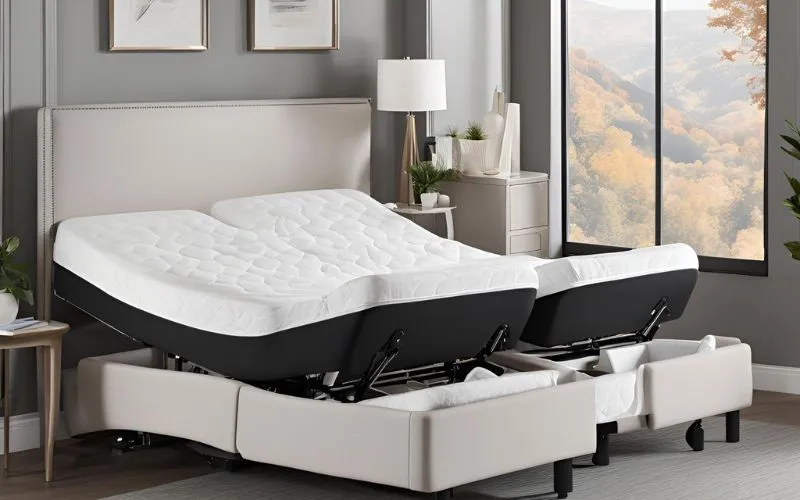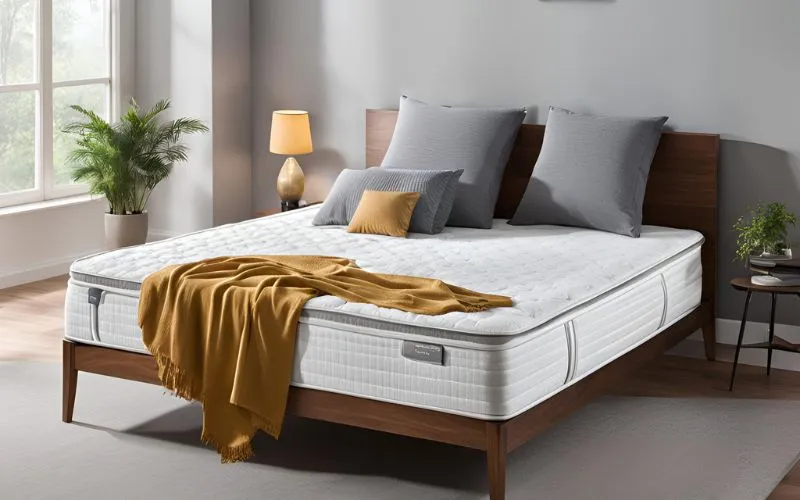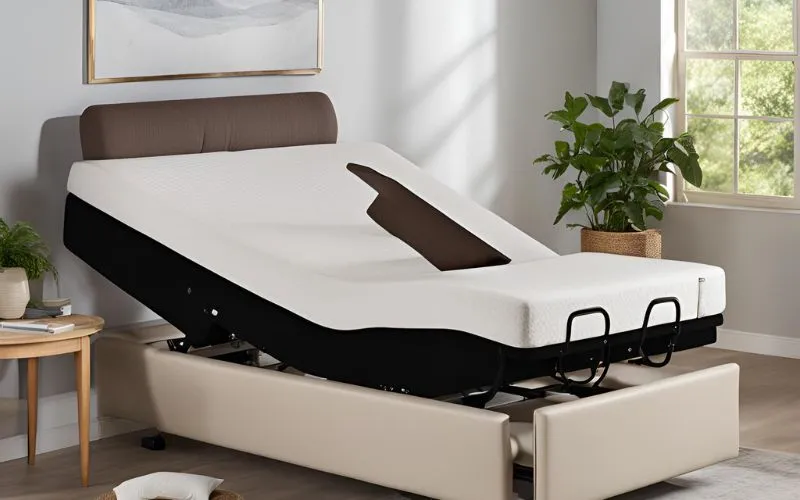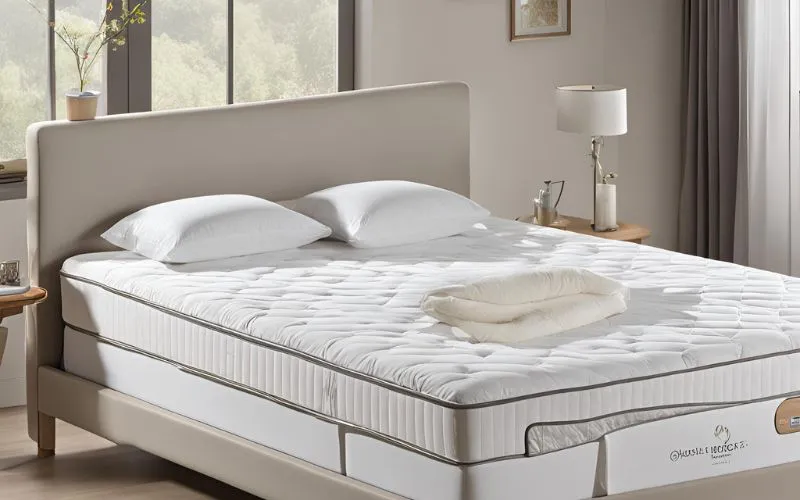Explore Adjustable Beds for Temporarily Disabled Individuals

Introduction
Welcome to our comprehensive guide on adjustable beds tailored for individuals with temporary disabilities. In this article, we will explore the benefits, features, and considerations associated with using adjustable beds to enhance comfort and support for those with temporary mobility challenges. We’ll delve into the key factors to consider when selecting the right adjustable bed and provide valuable insights into making the home environment more accessible. Let’s embark on a journey to understand how adjustable beds can significantly improve the quality of life for temporarily disabled individuals.
Understanding Temporary Disability and the Need for Adjustable Beds
What is Temporary Disability?
Temporary disability refers to a condition where an individual experiences a limited period of impaired physical mobility. This may result from injuries, surgeries, or medical conditions that temporarily affect the person’s ability to move and perform daily activities with ease. During such periods, the use of appropriate aids and equipment becomes essential to ensure comfort, support, and independence.
Benefits of Adjustable Beds for Temporarily Disabled Individuals
Adjustable beds are especially beneficial for individuals facing temporary mobility challenges. These beds offer a wide range of advantages that contribute to enhanced comfort, improved healing, and better quality of life. Here are some key benefits of adjustable beds for temporarily disabled individuals:
- Customizable Positioning: Adjustable beds allow users to elevate their upper body, lower body, or both, providing targeted support to alleviate pressure on specific areas. This customization is particularly beneficial for individuals recovering from injuries or surgeries.
- Enhanced Comfort and Relaxation: The flexibility of adjustable beds enables users to find their most comfortable sleep or rest position, promoting relaxation and reducing discomfort associated with temporary disabilities.
- Improved Circulation: By adjusting the bed’s positioning, users can enhance blood circulation, which is crucial for the healing process and overall well-being during temporary mobility challenges.
- Assistance with Daily Activities: Adjustable beds make it easier for temporarily disabled individuals to transition between sitting, lying down, or getting up, enhancing their independence and daily comfort.
These benefits make adjustable beds an essential component in providing support and aid to individuals facing temporary mobility challenges, ultimately contributing to a more positive recovery experience.
Types of Temporary Disabilities That Benefit from Adjustable Beds
Adjustable beds offer significant benefits for individuals with temporary disabilities, providing tailored support for various conditions and promoting healing and comfort. Here are some common types of temporary disabilities that greatly benefit from the use of adjustable beds:
- Post-Operative Recovery: Adjustable beds are ideal for individuals recovering from surgery, providing customizable positioning to alleviate discomfort, reduce swelling, and facilitate healing.
- Musculoskeletal Injuries:Individuals with musculoskeletal injuries such as strains, sprains, and fractures find relief in adjustable beds, which allow for personalized elevation and support, promoting proper alignment and minimizing pressure on affected areas.
- Difficulty Lying Flat: Conditions such as respiratory issues, acid reflux, and heart problems can cause discomfort when lying flat. Adjustable beds offer the ability to elevate the upper body, easing breathing, reducing acid reflux symptoms, and enhancing cardiac function.
- Chronic Pain: Temporary disabilities related to chronic pain, such as back pain or joint pain, can be alleviated by the customized positioning and support provided by adjustable beds, offering relief and improving sleep quality.
By addressing diverse temporary mobility issues, adjustable beds play a crucial role in promoting recovery and overall well-being for individuals with temporary disabilities.
Choosing the Right Adjustable Bed for Temporary Disabilities
Key Features to Look for in Adjustable Beds for Temporary Disabilities
When selecting an adjustable bed for temporary disabilities, it’s crucial to consider key features such as customizable positioning, quiet motor operation, sturdy construction, and user-friendly controls. These features ensure optimal comfort, safety, and convenience for individuals with temporary mobility challenges.
Considerations for Comfort and Support
Comfort and support are paramount when choosing an adjustable bed for temporary disabilities. Factors to consider include mattress type, pressure relief capabilities, and overall ergonomic design. These elements play a vital role in providing the necessary comfort and support to aid in the individual’s recovery process.
Customization Options for Individual Needs
When it comes to adjustable beds for temporary disabilities, customization options play a crucial role in providing optimal comfort and support. The following are essential customization features designed to meet individual needs:
- Adjustable Height: The bed should offer adjustable height settings to accommodate varying preferences and requirements based on the user’s comfort and mobility.
- Variable Degrees of Elevation: Providing a range of elevation options allows users to find the ideal positioning for relief from temporary mobility challenges. This feature enhances convenience and promotes better sleep quality.
- Compatibility with Mobility Aids: Ensuring compatibility with mobility aids such as walkers, canes, and wheelchairs is crucial for ease of access and independence. This enables individuals with temporary disabilities to seamlessly transition in and out of bed.
Furthermore, investing in an adjustable bed with personalized settings empowers users to find the most comfortable and supportive position tailored to their specific needs. By enhancing the individual’s ability to customize the bed according to their preferences, these features significantly contribute to an improved quality of life during the temporary period of mobility challenges.
Making Your Home Environment Accessible with Adjustable Beds
Adjustments to Bedroom Layout and Accessories
Creating an accessible home environment with adjustable beds involves making specific adjustments to the bedroom layout and incorporating supportive accessories. This may include optimizing furniture placement, installing grab bars, and ensuring adequate space around the bed for smooth maneuverability.
- Optimizing furniture placement: Rearranging furniture to create open pathways and ensure easy access to the adjustable bed.
- Installing grab bars: Adding grab bars near the bed to provide support and stability for individuals with mobility challenges.
- Ensuring adequate space: Allowing sufficient space around the bed for easy movement and comfort.
- Utilizing supportive accessories: Incorporating items such as bed rails and bedside tables to enhance safety and convenience.
- Considering lighting: Ensuring adequate lighting near the bed area to promote visibility and reduce the risk of accidents.
Safety Measures for Using Adjustable Beds
Ensuring safety when using adjustable beds is essential for individuals with temporary disabilities. Proper installation of bed rails, adherence to weight limits, and regular maintenance of the bed’s mechanical components contribute to a secure and hazard-free environment, promoting confidence and peace of mind.
Tips for Caregivers and Family Members
- Educating caregivers about the operation of adjustable beds is crucial to ensure the comfort and safety of the individuals with temporary disabilities.
- Assisting with positioning adjustments involves understanding the specific needs and preferences of the individual, which may require regular communication and observation.
- Fostering a supportive and encouraging atmosphere can significantly enhance the overall experience and well-being of the individual. This includes providing emotional support, engaging in meaningful conversations, and promoting independence whenever possible.
- Encouraging participation in recreational activities that are compatible with the individual’s condition can contribute to their physical and mental well-being. Examples include gentle yoga, short walks, and creative hobbies.
Conclusion
As we conclude our exploration of adjustable beds for temporarily disabled individuals, it’s evident that these specialized bedding solutions offer remarkable benefits and support for individuals facing temporary mobility challenges. By understanding the diverse needs of individuals with temporary disabilities and providing comprehensive insights into the selection, usage, and home integration of adjustable beds, we aim to empower and inform readers about the transformative impact of these supportive aids. Let’s continue to prioritize accessibility and comfort for all individuals, ensuring that temporary disabilities do not hinder a fulfilling and comfortable lifestyle.




